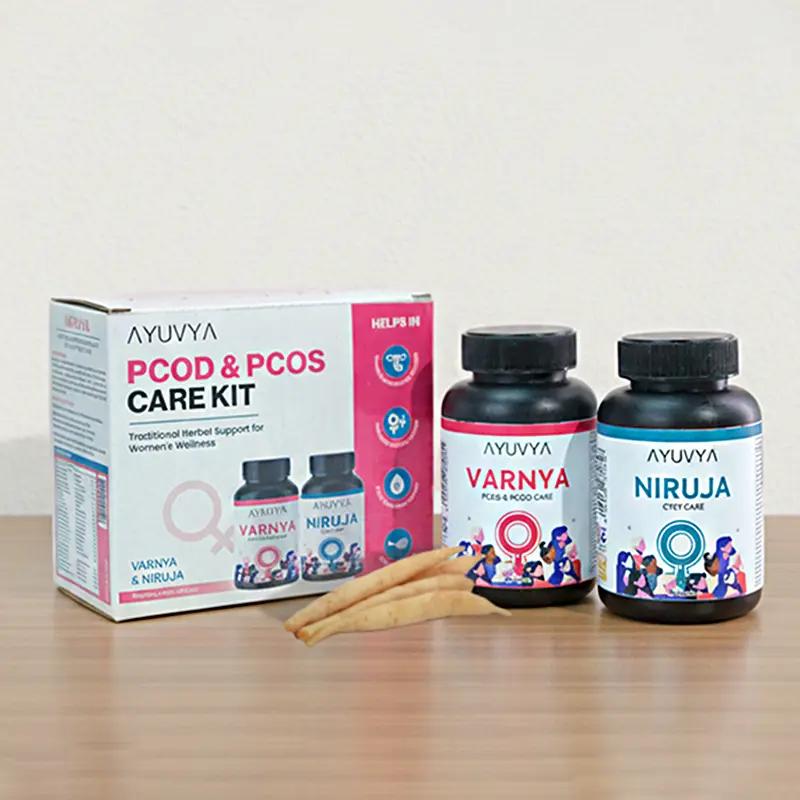A Complete Guide On Bilateral PCOS/PCOD
Apr 25, 2024

Polycystic Ovary Syndrome (PCOS) and Polycystic Ovarian Disease (PCOD) are challenging situations in women’s healthcare. Bilateral PCOS is a more specific term within this spectrum that implies the presence of polycystic ovaries on both sides, increasing the intricacies of hormonal imbalance and metabolic issues that are associated with this syndrome.
Table of Contents:
Are PCOD and PCOS the same?
PCOD and PCOS are often used interchangeably, but there are basic differences between the two:
1. PCOD is a condition in which ovaries are filled with multiple immature or partially grown eggs that transform into cysts. It is usually milder than PCOS and may not have all the symptoms of the syndrome. Women with PCOD might not have irregular menstrual cycles but they can suffer from other symptoms like weight gain and infertility.
2.PCOS is a metabolic disorder, which is worse and more complicated. PCOS is an endocrine system disorder that affects several bodily systems and is characterised by symptoms that include irregular menstrual cycles, hirsutism, acne, and obesity. It is also linked to insulin resistance, which can create a risk for other diseases such as type 2 diabetes, and heart diseases.
3 Key Factors to Identify Bilateral PCOS in Women
Irregular Menstrual Cycles
Women with bilateral PCOS often experience irregular periods or may skip periods altogether. This irregularity is due to hormonal imbalances that affect the normal ovulation process.
Physical Symptoms
Bilateral PCOS can lead to physical symptoms such as acne, excessive hair growth, and weight gain. These symptoms are a result of elevated levels of male hormones in the body.
Hormonal Imbalances
Hormonal imbalances are a major sign of PCOS. Women with bilateral PCOS typically have high levels of androgens, which can disturb the normal menstrual cycle and lead to the development of cysts on the ovaries. Insulin resistance, which can lead to high blood sugar levels, is also common in women with PCOS.
Role of Ayurveda in the Management of Bilateral PCOS
Ayurveda offers a holistic treatment for women with bilateral PCOS. It views these conditions not only as hormonal disorders but as disharmony of the doshas like Vata, Pitta, and Kapha. More specifically, it tends to link PCOS to Kapha dosha which rules the physical structure and fluid balance of the body. Here is how ayurveda can help:
1. Detoxification (Shodhana)
Panchakarma is one of the treatments recommended by Ayurveda that help to cleanse the body and bring the balance of doshas, which, in its turn, helps regulate the menstrual cycle and ovarian function.
2. Herbal Remedies(Dravya)
Ayurvedic medicine uses many herbs that are known for their ability to restore hormone balance and improve fertility. Herbs such as Shatavari, Gokshura, and Ashoka are known for their nourishing and balancing influences on the female reproductive system.
3. Diet and Nutrition (Ahara)
The core principle of Ayurveda is a balanced diet designed to balance the Kapha imbalance. Food which is light, warm and dry is usually recommended and food which is cold and heavy, and makes Kapha worse, is not to be taken.
4. Lifestyle Modifications (Vihara)
Physical activity, in particular yoga, is promoted to enhance insulin resistance which is a common feature of PCOS. Another significant role is played by stress reduction using meditation and breathing exercises (Pranayama).
5. Weight Management
Being overweight can worsen PCOS symptoms, and in this connection, Ayurveda recommends a balanced approach to weight management, focusing on healthy eating habits and regular physical exercise.
Final Words
Ayurveda offers holistic treatment for bilateral PCOS by addressing both symptoms and underlying causes. Through detoxification, herbal remedies, diet, lifestyle changes, and stress management, Ayurveda aims to balance the doshas, restore the body's natural rhythm, and promote healing from within.
Frequently Asked Questions
Ayurvedic management of bilateral PCOS aims at balancing doshas and improving metabolism using herbs, diet and lifestyle changes. It can also aid in the control of symptoms and better overall health.
In women, PCOS can present with irregular menstrual cycles, weight gain, acne, hirsutism, and infertility. Hormonal disbalances are one of the main factors.
Bilateral PCOS can raise the chance of infertility, metabolic syndromes, diabetes and other cardiovascular diseases if it is not properly controlled.
The causes of PCOS involve hormonal imbalances, insulin resistance, inflammation, and genetic factors. These conditions give rise to cysts and other symptoms.
A woman with bilateral PCOS has cysts in both ovaries which aggravates the symptoms of irregular menstruation and hormonal imbalances.














